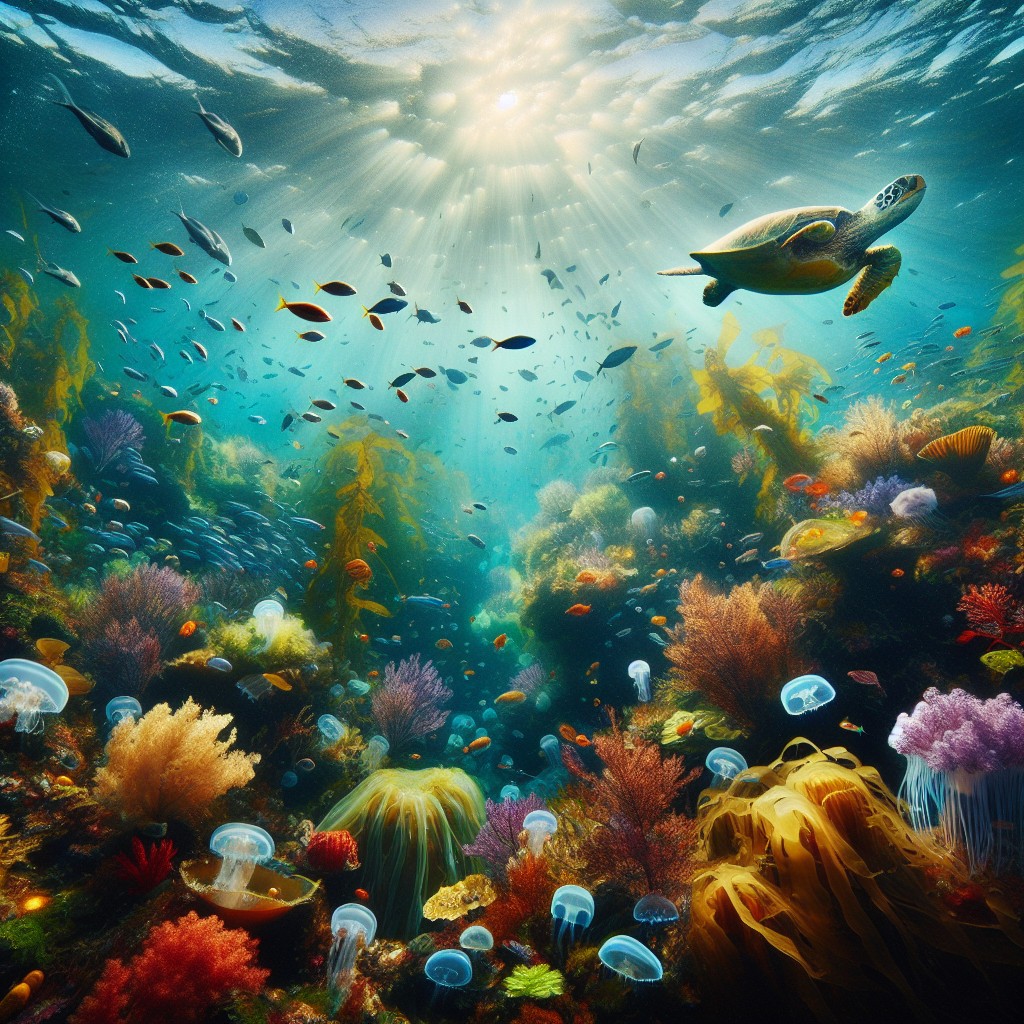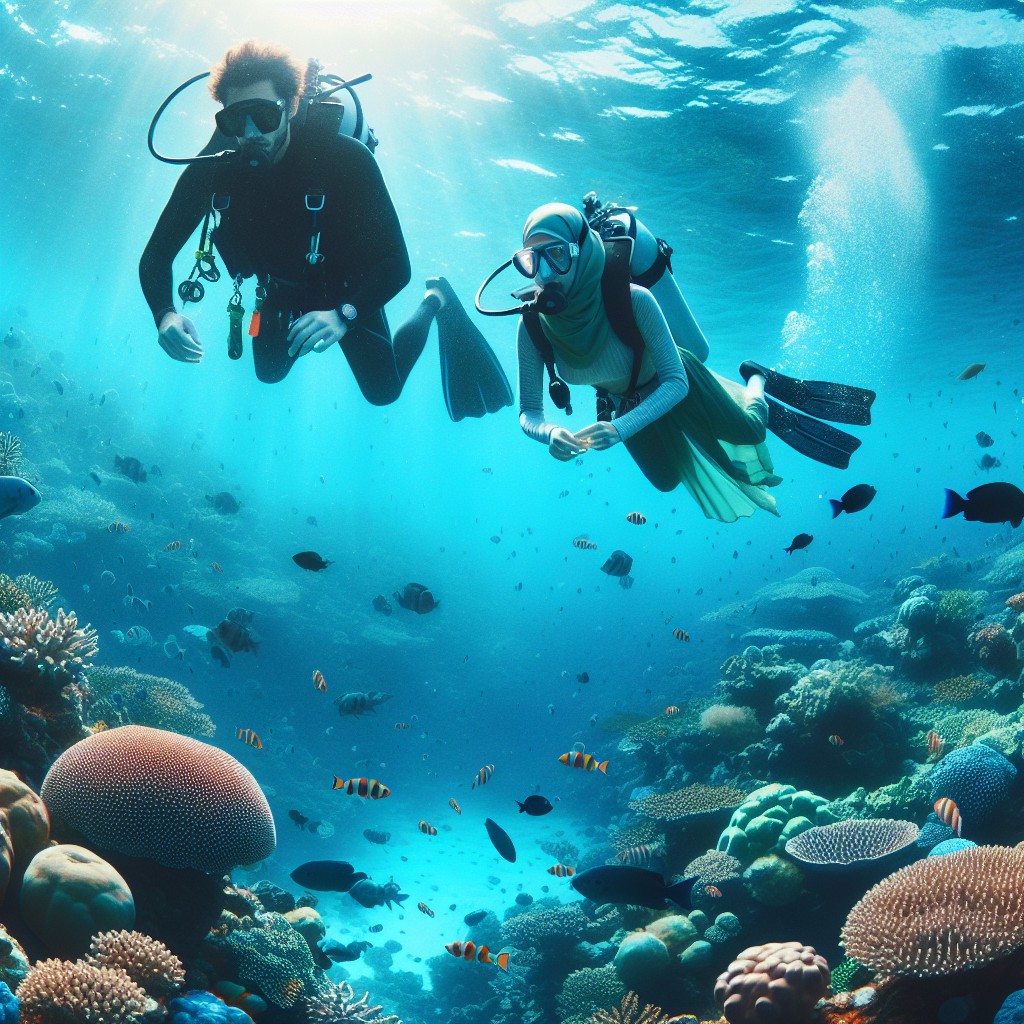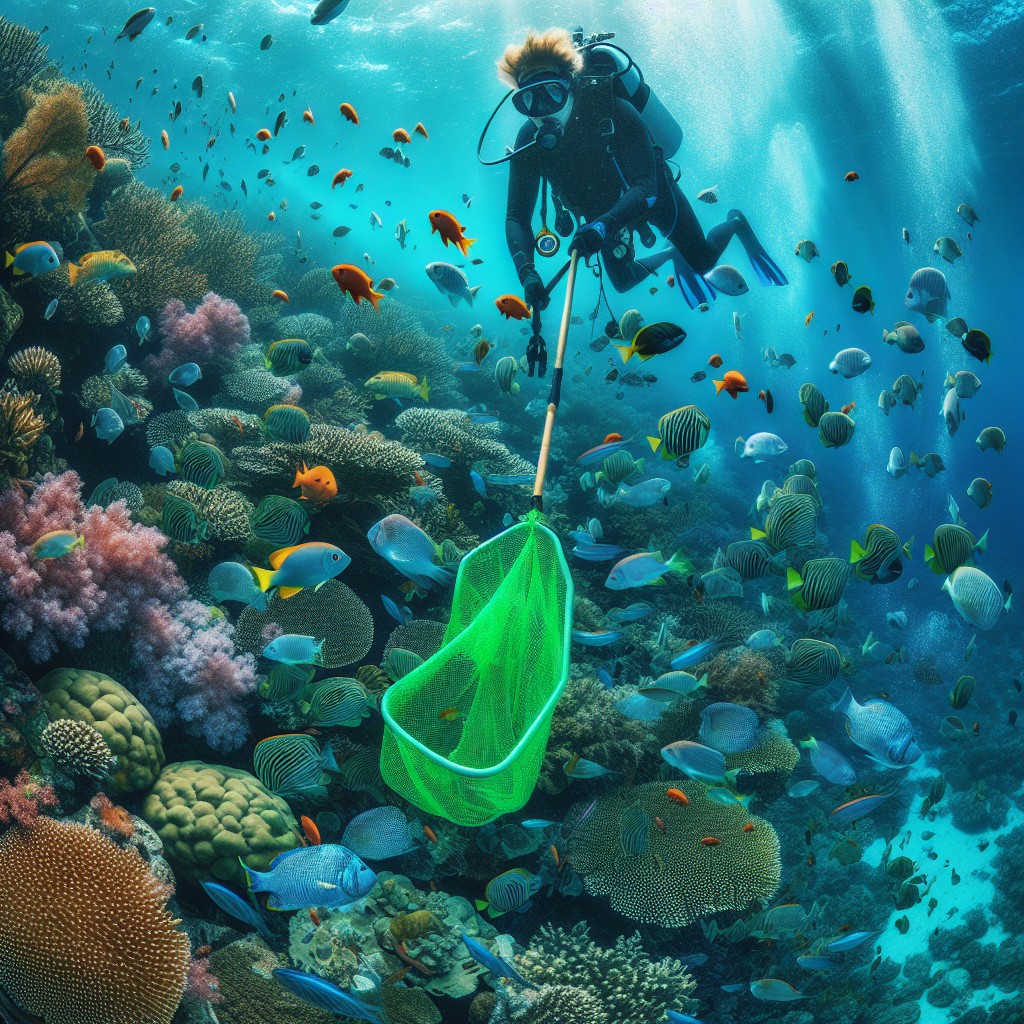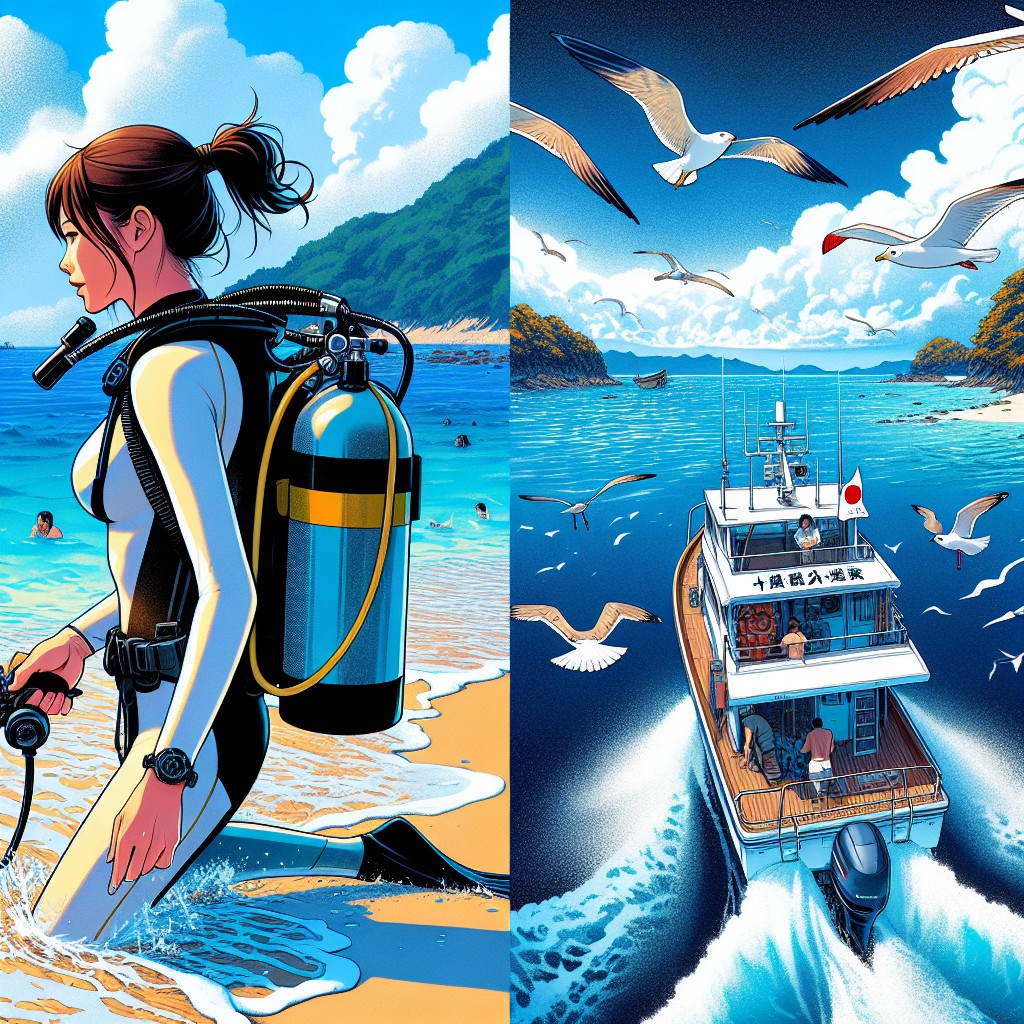Exploring Marine Life in Japan
Japan’s waters are teeming with diverse marine life, offering unique opportunities for scuba divers to witness remarkable ecosystems. Understanding the endangered species within these waters provides insight into the conservation efforts that are essential for preserving marine biodiversity.
International Endangered Species in Japan
Japan’s waters also host a variety of International Endangered Species (IES), highlighting its role in global biodiversity efforts. As of 1st July 2021, there are 217 designated bird species in accordance with international migratory bird agreements and CITES Appendices. These protections extend to various marine creatures that diversify Japan’s underwater habitats.
| International Endangered Species | Total Number |
|---|---|
| Designated Bird Species | 217 |
| Marine Mammals | X |
| Coral Species | Y |
Efforts to protect these species align with global initiatives to safeguard marine life, emphasizing Japan’s contribution to marine conservation. Experienced divers can explore the waters around Japan and encounter species such as manta rays and hammerhead sharks (World Adventure Divers).
As divers prepare for their adventure, understanding the unique marine life in Japan’s waters enhances their experience. For more information about diving sites rich in diverse species, check our listings of the best dive sites in Japan.
Diving Highlights in Japan
Japan is home to an incredible array of marine life waiting to be explored. This section highlights the spectacular underwater biodiversity and popular snorkeling destinations, offering divers a glimpse into the wonders of the Japanese waters.
Spectacular Marine Life
Japan’s waters are teeming with diverse marine life ranging from vibrant corals to fascinating creatures. Popular species include manta rays, hammerhead sharks, turtles, and dragon moray eels, making it an exhilarating destination for experienced divers (Blue Japan).
The following table outlines some of the prominent marine wildlife encountered in Japan:
| Marine Life | Notable Locations | Best Viewing Season |
|---|---|---|
| Manta Rays | Okinawa, Izu Peninsula | May – November |
| Hammerhead Sharks | Kerama Islands | May – November |
| Turtles | Okinawa, Miyako Islands | May – October |
| Dragon Moray Eels | Amami Islands | Year-round |
| Nudibranchs | Ogasawara Islands | Year-round |
Popular Snorkeling Destinations
For those interested in snorkelling, Japan offers some fantastic spots where one can observe colourful marine life with relative ease. Okinawa Prefecture is regarded as Japan’s prime snorkelling destination. Here, snorkelers can enjoy the beauty of marine biodiversity just off the beach, making it accessible for all skill levels. The ideal months for snorkelling in Okinawa are typically from May to October, when the water and air temperatures are most suitable (Japan Guide).
Other notable snorkelling locations include:
| Snorkeling Location | Description |
|---|---|
| Kerama Islands | Clear waters and rich marine life, perfect for beginners and families. |
| Ishigaki Island | Swimming with tropical fish and vibrant coral reefs. Suitable from May to October. |
| Miyako Islands | Known for their stunning coral reefs and visibility. Best explored in the summer months. |
For those looking to elevate their underwater experiences, resources like introduction to scuba diving in japan and diving in okinawa provide valuable insights into the rich marine biodiversity and ideal conditions for diving adventures. Explore these destinations for an unforgettable diving holiday!
Scuba Diving in Japan
Japan offers an incredible experience for scuba divers, combining vibrant marine life, intriguing dive sites, and unique underwater landscapes. The diverse waters of Japan are home to an array of marine species, making it a remarkable destination for underwater exploration.
Dive Sites and Wildlife
Diving in Japan provides opportunities to encounter unique marine creatures and pristine underwater environments. The waters around Japan boast various dive sites that cater to both novice and experienced divers. Here are some notable wildlife sightings that divers might encounter:
| Dive Site | Marine Life |
|---|---|
| Okinawa | Manta rays, sharks, vibrant coral reefs |
| Izu Peninsula | Seasonal fish, colourful nudibranchs, various crustaceans |
| Kerama Islands | Sea turtles, tropical fish, reef sharks |
| Yonaguni Monument | Rare species, historical underwater stone formations |
| Hokkaido | Ice fish, marine mammals during winter |
Japan is particularly renowned for its shark diving and manta ray encounters, with popular sites located in the Okinawa Prefecture, known for locations like the Yonaguni Monument and Kerama Islands National Park.
Best Dive Sites in Japan
The variety of dive sites across Japan offers something for everyone. Below are some of the best dive locations in the country:
| Dive Site | Description |
|---|---|
| Okinawa | Known for its clear water and rich marine life, it is ideal for both beginners and experienced divers. |
| Kerama Islands | An excellent spot for observing manta rays and turtles, famous for stunning coral reefs. |
| Izu Peninsula | Close to Tokyo, offers various dive conditions and unique underwater topography all year round. |
| Yonaguni Monument | Features mysterious submerged structures and an array of marine species, attracting curious divers. |
| Hokkaido | Famous for ice diving, offering a unique experience to see marine life in frigid conditions. |
For divers who prefer technical diving, wreck diving in Japan is also noteworthy, with many historical sites submerged in the oceans. Each of these sites offers a different kind of underwater adventure, ensuring memorable experiences for those eager to discover the rich marine life in Japan waters.
Exploring any of these dive sites presents an opportunity to witness the spectacular underwater world, making Japan one of the top destinations for scuba diving enthusiasts. For more in-depth information, consider checking our articles on diving conditions in Japan and the best times for diving in Japan at best time of year for scuba diving in Japan.
Environmental Concerns in Japanese Waters
Fukushima Daiichi Nuclear Plant
The Fukushima Daiichi nuclear power plant has raised significant environmental concerns regarding marine life in Japan’s waters. Following the tsunami disaster in 2011, the plant has been storing treated radioactive wastewater, with Japan’s government planning to release this tritium-contaminated water into the sea over a period of 30 years. This decision poses risks to the marine environment and public health on a global scale. The wastewater contains more than 60 radionuclides, many of which current treatment technologies are unable to effectively manage (China Daily).
Concerns are mounting since radioactive materials from the plant could spread throughout most of the Pacific Ocean within just 57 days. Furthermore, these contaminants could reach all oceans in as little as a decade. Experts from Greenpeace have warned that isotopes like carbon-14 could remain hazardous for thousands of years, with a potential for causing genetic damage (China Daily).
| Contaminant | Regulatory Limit | Detected Level in Fish |
|---|---|---|
| Radioactive Caesium | 100 Bq/kg | 18,000 Bq/kg |
Marine Pollution Incidents
In addition to the concerns stemming from the Fukushima disaster, Japan faces ongoing issues regarding marine pollution. Despite stringent regulatory measures, incidents of marine pollution linked to industrial activities, agricultural runoff, and plastic waste continue to threaten fragile marine ecosystems. High levels of pollutants have been detected in coastal waters, impacting marine life and ecosystems.
The repercussions of this pollution are particularly significant for scuba divers planning their next diving adventure in Japan, as it affects their experiences and the overall health of underwater environments. Various regions known for their rich biodiversity, such as Okinawa and the underwater ruins of Yonaguni, may face long-term consequences from these environmental concerns.
The efforts to address marine pollution are crucial for preserving Japan’s aquatic habitats and ensuring the safety of divers. For sustainable diving experiences, divers are encouraged to engage in eco-friendly diving practices in Japan and remain informed about the current conditions of dive sites.
Japan’s Marine Biodiversity
Japan’s waters are home to an impressive array of marine life, showcasing an exceptional level of biodiversity that is both rich and varied. This section focuses on species diversity within Japanese waters and the threats that endanger this unique marine ecosystem.
Species Diversity in Japanese Waters
Japanese waters are reported to host a total of 33,629 species, accounting for approximately 14.6% of all marine species globally, despite the relatively small area and volume of Japan’s maritime environment. More than 70% of Japan’s marine biodiversity remains undescribed, indicating much work is still required to fully understand the marine ecosystem (PubMed Central).
The total number of identified but undescribed species in Japanese waters is at least 121,913, leading to an estimated total of 155,542 species for both described and undescribed categories. Japan’s marine biodiversity is influenced by various historical and environmental factors, making it a critical area for marine biology research (PubMed Central).
A detailed overview of the marine species diversity is summarised in the table below:
| Category | Number of Species |
|---|---|
| Described Species | 33,629 |
| Undescribed Species (Estimated) | 121,913 |
| Total Species (Described + Undescribed) | 155,542 |
Threats to Marine Biodiversity
Japan’s rich marine ecosystems face several threats that significantly impact marine biodiversity. Factors such as global climate change and human activities pose serious risks. Increased maritime trade has heightened the risk of introducing invasive species, which can disrupt local ecosystems (NCBI).
Additionally, fishing practices and pollution, particularly from industrial activities, contribute to the decline of certain species and habitats. The repercussions of these threats can be devastating, leading to ecosystem imbalances and loss of biodiversity.
To understand these threats better, refer to the following table highlighting some key factors affecting marine biodiversity in Japan:
| Threat Type | Description |
|---|---|
| Climate Change | Alters ocean temperatures, affecting marine habitats and species distributions. |
| Human Activities | Includes fishing practices, maritime trade, and pollution from industries. |
| Invasive Species | Non-native species introduced through trade can outcompete local species for resources. |
Japan’s diverse marine life is a treasure waiting to be explored, and it is crucial to continue research and conservation efforts to protect this invaluable resource. For those interested in experiencing this biodiversity firsthand, exploring the best dive sites in Japan is a perfect way to engage with the underwater world.
Conservation Efforts in Japan
Japan has recognized the importance of protecting its rich marine biodiversity and has initiated various conservation efforts to safeguard its aquatic ecosystems. Through international cooperation and ongoing research initiatives, the country aims to preserve its unique marine life, which divers can observe during their underwater adventures.
International Marine Conservation Cooperation
Japan participates in numerous international efforts to conserve marine environments. These include joint study programs and bilateral agreements with neighbouring countries, focusing on collaborative actions to protect marine ecosystems. Notably, Japan is active in conventions such as the Convention for a North Pacific Marine Science Organization (PICES), which promotes sustainable use and conservation of marine resources in the North Pacific region (Ministry of the Environment Government of Japan).
| Cooperation Type | Description |
|---|---|
| Joint Study Programs | Collaborative research initiatives with other countries |
| Bilateral Agreements | Formal agreements focusing on marine conservation efforts |
| PICES Participation | Engagement in conventions aimed at marine ecosystem protection |
These collaborations enable Japan to share knowledge and strategies with other nations, helping to address global challenges such as climate change and invasive species that significantly threaten marine biodiversity.
Research and Monitoring Initiatives
Ongoing research and monitoring initiatives are critical for understanding the state of Japan’s marine life. The country’s marine biodiversity and ecosystems face significant challenges from global climate change and human activities. As such, research efforts are aimed at evaluating the impacts of these factors and finding ways to mitigate their effects on marine habitats.
| Initiative Type | Focus Area |
|---|---|
| Ecosystem Assessments | Evaluating health and diversity of marine life |
| Climate Change Impact Studies | Investigating the effects of climate change on ecosystems |
| Invasive Species Monitoring | Tracking the introduction and spread of non-native species |
Through these initiatives, Japan seeks to contribute to the understanding of marine life and promote sustainable practices that ensure the longevity of its underwater ecosystems. Divers exploring Japan’s waters can take part in this conservation effort by practising eco-friendly diving techniques, which can further foster awareness of marine life in Japan’s aquatic environments. For additional insights on responsible diving practices, visit our article on eco-friendly diving in Japan.



